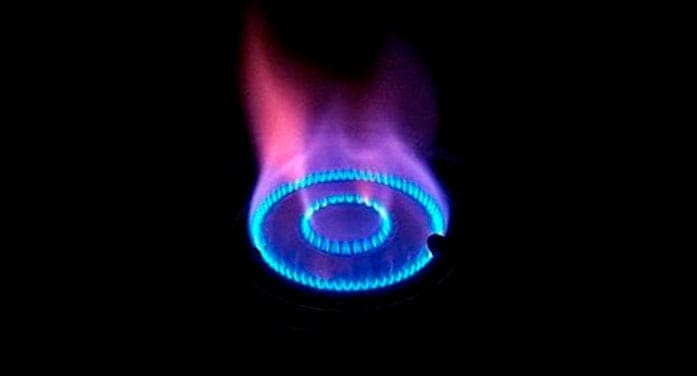By Mark Milke
and Ven Venkatachalam
Canadian Energy Centre
If you’ve heard that Canada should skip plans to export natural gas to Asia, including from a few anti-oil-and-gas academics, you’ll notice one theme pops up: how Canadian firms really shouldn’t waste their time because there’s no money in it.
This reasoning is daft. If there were no profit potential, energy firms would figure it out or go broke trying. The attempt to warn off Canadian energy companies is a transparent attempt by anti-oil-and-gas advocates to find yet another reason to bash one of Canada’s biggest employers and providers of tax revenues to all levels of government.

Mark Milke
Natural gas prices vary considerably between what Canadian producers garner at home versus what it sells for in Asia. That premium has long been known by energy firms in countries such as Qatar and Australia, which is why they have long sold their gas into Asia.
To see this, let’s first compare natural gas prices in Canada with the American market. The U.S. is Canada’s only natural gas export market due to a lack of liquefied natural gas (LNG) plants on Canadian coasts.
In Canada, 18 LNG projects have been proposed. However, only one is under construction due to delays caused by regulatory and financial barriers over the years, along with anti-natural-gas activism. Australia has 16 LNG terminals, Qatar has 12, and the U.S. has seven.
Between 1990 and 2019, American (Henry Hub) and Canadian (AECO-C) natural gas spot trading prices closely tracked each other.
The tightest price gap was in 2008 when U.S. natural gas sold for US$8.85 per million British thermal unit (BTU), just 11 per cent higher than the US$7.99 Canadian natural gas fetched that year.
The largest percentage gap between the two countries was in 2018, when U.S. natural gas sold for US$3.13 per million BTU, 179 per cent higher than the US$1.12 average fire-sale price in Canada that year. But even then, the difference in pricing between Canada and the U.S. was just $2.

Ven Venkatachalam
Between 2000 and 2019, average natural gas prices in Asia have been significantly higher than in Canada most years. The exceptions were in 2003 when Asian spot prices were just three per cent higher, and in 2005, when they were three per cent lower than in Canada.
In every other year, natural gas sold for a premium in Asia compared to Canada.
Using AECO-C natural gas prices for Canada and the LNG Asia average, in 2012 natural gas sold for US$2.27 per million BTU in Canada and US$18.15 in Asia. Asia’s price was $15.88 more, fully 699 per cent higher.
In 2018, when Canada’s natural gas prices were rock-bottom, the largest percentage gap between Canada and Asia was evident. Natural gas sold for just US$1.12 per million BTU in Canada and for US$9.80 in Asia. That was an $8.68 difference or 775 per cent higher.
FROM THE ARCHIVES: Attempts to discredit LNG miss the mark by Brad Hayes
This large price gap between Canada and Asia has been obvious for over a decade and is reflected in specific markets.
Since 1990 in Japan, prices for LNG were higher than Canada’s gas prices in all but 2003 and 2005. In every other year, natural gas prices in Japan were higher – from three per cent in 2004 to 797 per cent in 2018. The highest dollar gap year for prices was 2012 when natural gas sold for US$2.27 per million BTU in Canada and US$16.75 in Japan, a $14.48 or 638 per cent difference.
In South Korea, where data are available only since 2009, prices for natural gas have always been above Canada’s. The range was between US$1.90 and US$13.63 more per million BTU (in 2009 and 2013, respectively). As a percentage, natural gas prices in South Korea have ranged from 56 per cent more in 2009 to 771 per cent higher in 2018.
Western Canada has several cost advantages over other LNG-exporting countries such as the U.S., Qatar and Australia.
Shipping costs to Japan from Canada are estimated at 99 cents to $1.09 per million BTU. That compares to $1.50 to $1.54 per million BTU from Qatar and $2.40 to $2.45 per million BTU from the U.S. Gulf of Mexico.
This is explained in part by distances: Qatar is 11,773 km from the Japanese port of Himeji and 12,056 km from Sodegaura. Canada’s westernmost port, Kitimat, B.C., is 7,698 km from Himeji and 7,322 km from Sodegaura.
All of these are distinct Canadian advantages. So if you hear an anti-gas advocate claim Canadian energy companies should avoid Asian markets, know this: they haven’t run honest numbers.
Mark Milke and Ven Venkatachalam are with the Canadian Energy Centre, an Alberta government corporation funded in part by carbon taxes. They are authors of Canada’s LNG Opportunity in the Asia-Pacific Natural Gas Market.
Mark and Ven are among our Thought Leaders. For interview requests, click here.
The views, opinions and positions expressed by columnists and contributors are the authors’ alone. They do not inherently or expressly reflect the views, opinions and/or positions of our publication.
© Troy Media
Troy Media is an editorial content provider to media outlets and its own hosted community news outlets across Canada.

